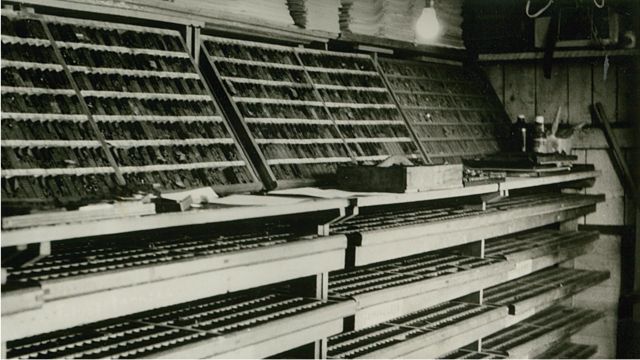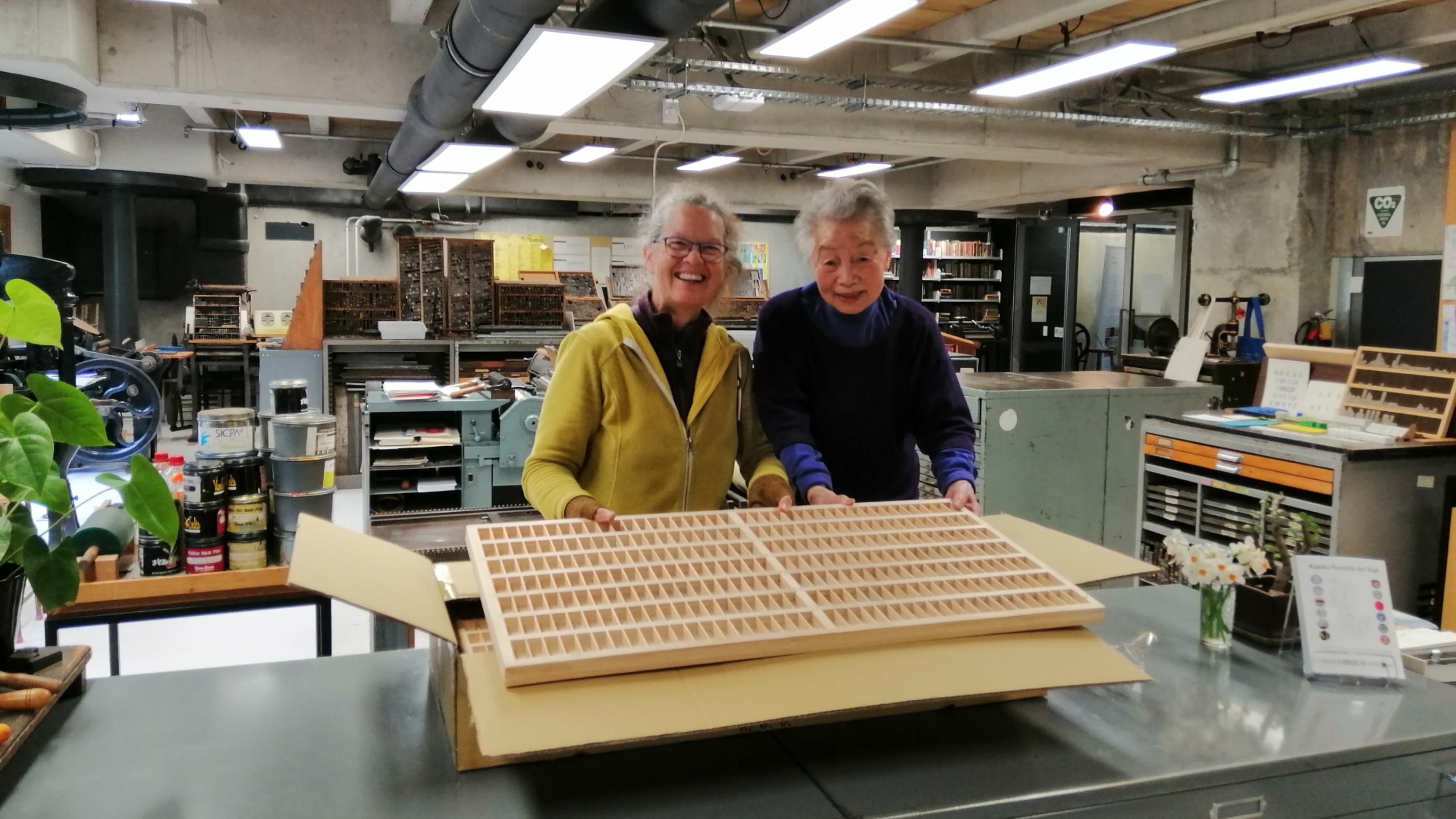Restoration III: Type cases
Learn more about the challenges of transferring heritage types to new type cases.

Stored in non-weathertight conditions for two decades, some of the type cases housing the Chinese heritage types arrived at Wai-te-ata Press in states of disrepair. In order to use the Chinese heritage types again, it is necessary to transfer and organise the pieces of metal type into new type cases. This sounds simple, but is surprisingly complex.

To begin, the Chinese writing system offers unique challenges and there is no strict standard for the organisation of type cases. Instead, there are broad organising principles. A common method is the Shanghai-style, pioneered by William Gamble in 1858. These organising principles have regional flavours, and we witnessed instances of a Taiwanese-style on our research trip.
Understanding our Canton model type cases
Wai-te-ata Press’ collection is unique in using ‘Canton Model 廣東式’ type cases. When we hosted Professor Wu Tsu-Ming (吳祖銘) for a consultation, he was very excited to discover the existence of a Canton Model. In the 1961 edition of Handy Specimen of Printing Types, published by UTF, the Canton Model is described as:

"Chinese Type Case 中文字盤
Canton Model 廣東式: 8½” x 36” – 每盤288格全副約26盤
(Each type case contains 288 compartments, complete set approximately 26 cases)"
In addition to the technical specifications, there is a brief description:
“中文活字,全副字數,凡七千餘字,而裝置字粒之字盤,向無劃一標本,蓋各排字間因其環境應用不同 (如排書籍,文件,報章等) 多自行參訂,以利作業之實用也。苟無此種特性者,則本篇所刊出之兩種 (廣東式與上海式) 式樣,乃屬普遍適用,固本公司除介紹外,並有印備此兩種字盤之編配本,以應各字房剪貼編訂之用。” (p.54)
"A complete set of Chinese movable type is some seven thousand characters, and there is no single standard for the design of type cases. Each typesetting office sets their own standard depending on their situation and application (for example, typesetting books, documents and forms, newspapers etc), for their own practical use. For those without specific needs, our firm publishes guidelines for two styles (Canton-style and Shanghai-style) which are suitable for general use. Our firm also supplies type-ordering catalogues for typesetting offices to cut and paste as labels." (Translated by Ya-Wen Ho)
Our UTF type cases predate this edition, and record subtle changes between 1951 and 1961. While the type case shown above is 36 columns across by 8 rows down, giving 288 compartments, we have two different type cases: 36 columns across by 7 rows down, giving 252 compartments, and 40 columns across by 7 rows down, giving 280 compartments. Each of our cases holds fewer characters, and the complete set in 1951 was 24 cases, two fewer than what is considered a complete set in 1961.

Expanding from the type case, which is just one element of the composition room, rare historical photos of the Dominion Federation of NZ Chinese Commercial Growers offices show a composition room which hybridised the Western practice of type cabinets with drawers that pull out horizontally, and the Chinese practice of angled open shelving. Assorted sundries held at Wai-te-ata Press’ also include wooden composition sticks, which the UTF Handy Specimen (1967) describes as ‘a very popular and economy for Chinese or Wooden Type composing’ (p.52).

It was delightful to witness these culturally-specific tools still in use in Taiwan.

We were even more delighted to be gifted elements of a Chinese composition table to eventually rehome at our Chinese Scholars’ Studio.
A gift of type cases from Ri-Xin Type Foundry

Given the rich array of typesetting practices, informed by cultural and economic factors, Wai-te-ata Press’ simple-seeming mission to transfer and organise the pieces of metal type into new type cases becomes a nuanced investigation of what motivates historic re-construction.
In looking to the future, the connections made during our research trip are already bearing fruit – Mr. Chang of Ri-Xin Type Foundry, the last operational foundry casting full-form Chinese type, has generously gifted Wai-te-ata Press a sample of newly-manufactured type cases and composition tools.
Wai-te-ata Press is also eager to host Mr. Chang and a significant delegation of related experts from Taiwan for an on-site consultation in November, in addition to their participation as panellists in a special panel within the Dragon Tails conference.
New Life for Old Type

In October 2022, Wai-te-ata Press received a shipment of 100 new wooden typecases manufactured by At Qimega Co., Ltd in Taichung City, Taiwan to house our Chinese Heritage Type collection. As our weekly Wednesday afternoon type volunteers clean and catalogue over 300,000 individual characters, they can now place them directly in specially designed cases that replace the original broken and dirty, bird and rat-infested trays.
Many thanks to the Chinese Poll Tax Heritage Trust, the NZ China Friendship Society and their Wellington Branch, as well as the Chan Family for funding this critical part of the development of our community-focussed Studio of the Waters of Dawn.
Sydney Shep and Esther Fung celebrate the arrival of our new type cases. Image credit: Duncan Campbell
